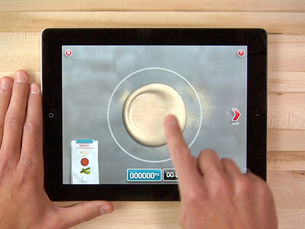Want smarter insights in your inbox? Sign up for our weekly newsletters to get only what matters to enterprise AI, data, and security leaders. Subscribe Now
Mobile marketing has been around for a while, but now even small businesses are waking up to the reality that an optimized mobile marketing strategy isn’t a luxury — it’s a necessity.
According to Kenshoo’s latest quarterly report on mobile app advertising, over the past year, app developers have increased their spending on Facebook ads alone by 293 percent. This is because mobile app installs are also up by a staggering 346 percent.
Rising budgets, increased app usage, and intense competition have compelled marketers to invest heavily.
These developments raise an important question: How can businesses stand out in a crowded, yet crucial, marketing channel?
A game-changing approach to mobile marketing is all about covering four key areas.
Personal
Every tactic on this list comes down to one basic principle: Mobile marketing demands engaging customers on their level with personalized offers delivered directly to them online via a responsive website, social media platform, push notification, or even from within someone’s favorite mobile app.
Millennials, in particular, have no tolerance for traditional advertising. Since this technology-savvy group also spends the most time on mobile apps — an average of 30 hours per month on social apps alone — they represent a golden opportunity for brands.
For instance, bourbon maker Jim Beam partnered with Snapchat to deliver the platform’s first ever whiskey ads to users 21 years and older using a targeting technique called “age-gating.” This was a powerful one-two approach to personalization.
Even if you can’t partner with a giant like Snapchat, innovative platforms like Fanplayr can be used to not only analyze and segment your customers in real time, but also to deliver custom offers, calls-to-action (CTAs), and personalized visuals. For example, CoolCat, a Dutch industry fashion retail leader, saw a 58 percent increase in conversion rate and a 71.5 percent increase in net revenue rate simply by offering contextual intent offers and customized welcome messages using the platform.
Localized
According to a 2014 survey by Brightlocal, consumers prefer shopping within a 17-mile radius of their homes.
Hyperlocal marketing is the ability to combine big data tools with unique geolocation technology to generate targeted offers that satisfy an immediate need. Services such as CloudEngage use precise location data for dynamic insertion, personalized CTAs, and — important for mobile — push notifications.
For example, with 39 stores in 6 states, sports outlet Runnings was able to increase its click-through rate to a whopping 30 percent by offering “store-specific promotions on their corporate site, each with its own geo-fence, so only the local market [saw] the promotion.” Moreover, by localizing your mobile app or website, you can capture shoppers who are using those tools in their buying decisions in-store.
That said, do not force location-based services on your customers because this might alienate them.
“One of the mistakes that app owners make is they just allow location services to kind of pop up and use them too early on — in a way that the user doesn’t understand,” said Mike Schneider, VP of marketing at Skyhook Wireless
Educate your customers about the benefits of location-based services. Then, let them opt in. Your thoughtfulness will earn their trust, their permission, and, most importantly, their loyalty.
Searchable
What if your business already has a mobile app?
You’re not alone. There are now over 3 million apps in the leading app stores, and 63 percent of iOS users and 80 percent of Android users discover new apps via app store search.
Therefore, if you want to be discovered by your target audience, you have no choice but to improve your app’s ranking and visibility using app search optimization (ASO) techniques, a topic VB Insight is studying right now (take their survey).
Researching the search phrases or keywords used by your target audience as well as your competitors are essential to creating searchable app descriptions, titles, and metadata.
After you’ve nailed down your keywords, stick to these cardinal rules:
- Keep your title short (i.e., less than 25 words).
- Stand out by being creative, unique, and personable in your description.
- Never be afraid to namedrop your competitors in your description in order to both associate and differentiate yourself.
“The goal is creating the best basket of keywords that maximizes coverage of relevant search terms from your target audience, in a category that best matches the market’s expectation for similar apps,” said Dave Bell, the CEO of Gummicube.
Promotable
After being searchable, getting your app into the hands of customers demands promotion. Your app promotions should be strategically divided into two stages: pre-launch and post-launch.
Prior to the launch, entice your potential viewers with mobile-friendly teaser videos, contests, Q&A sessions, and behind-the-scenes content. Given the dominance of social media, partnering with one or more key influencers in your niche is extremely powerful and organic.
After the launch, invite your audience to test-drive your app for free for a limited time. Continue to connect with your audience on social media or other community forums to answer questions, share success stories, and troubleshoot in real time.
Cross-promotion is another popular trend. In fact, there are several cross-promotion tools that allow you to partner with another app developer to exchange user downloads.
However, the most effective game-changer is gamification itself. Given that gaming is the most popular app category of millennials worldwide, few promotional tactics engage, entertain, and sell better. Case in point: Within its first year, Domino’s Pizza’s gaming app Pizza Hero reached $1 billion in sales and, at its peak, accounted for 30 percent of the company’s overall revenue. Simple, but incredibly effective.
Strategize and shine
It’s no secret: the growth of all things mobile has transformed mobile marketing into a necessity for brands both big and small.
You can stand apart with agile ASO techniques, creative promotional endeavors, localized offers, and personalized services. That’s exactly what a game-changing mobile marketing approach comes down to.
 Dennis Mitzner is a Tel Aviv based journalist covering startups and tech trends, with a focus on Israel and Scandinavia. He also works with startups to devise content and marketing strategies.
Dennis Mitzner is a Tel Aviv based journalist covering startups and tech trends, with a focus on Israel and Scandinavia. He also works with startups to devise content and marketing strategies.



